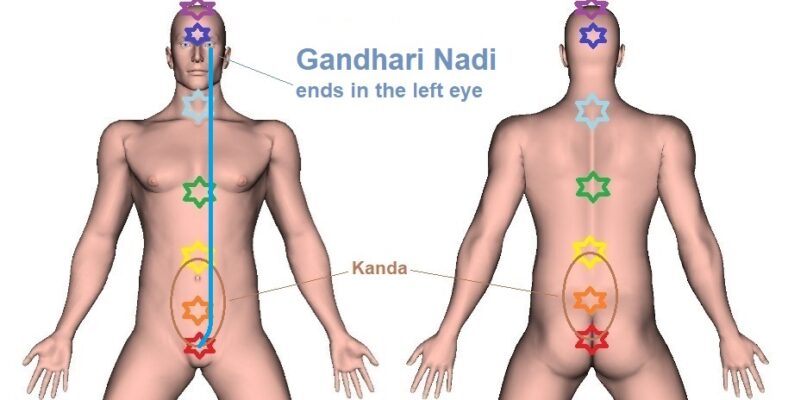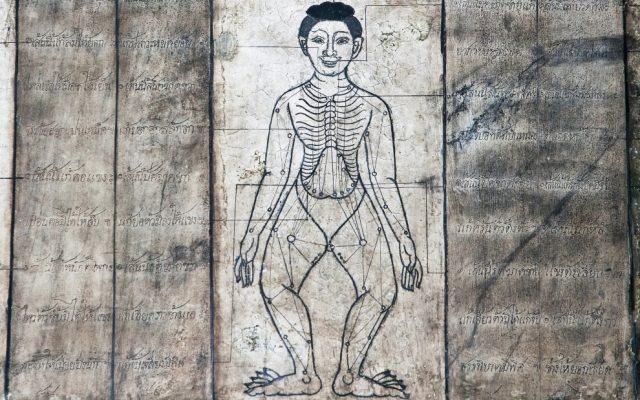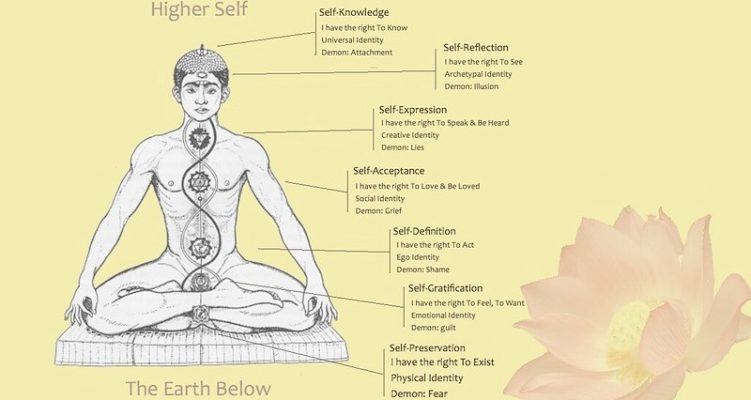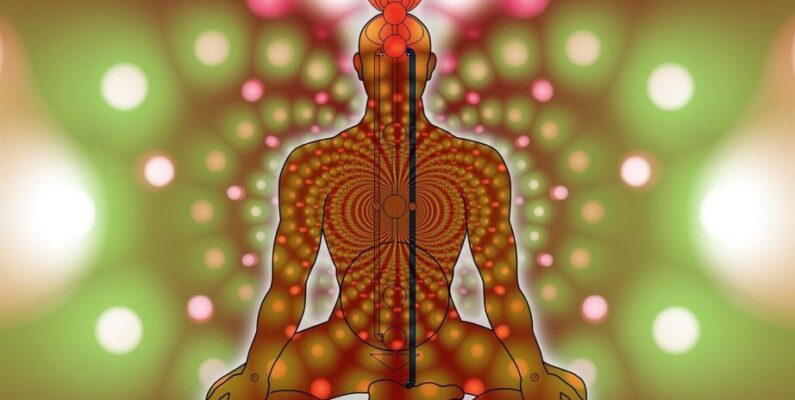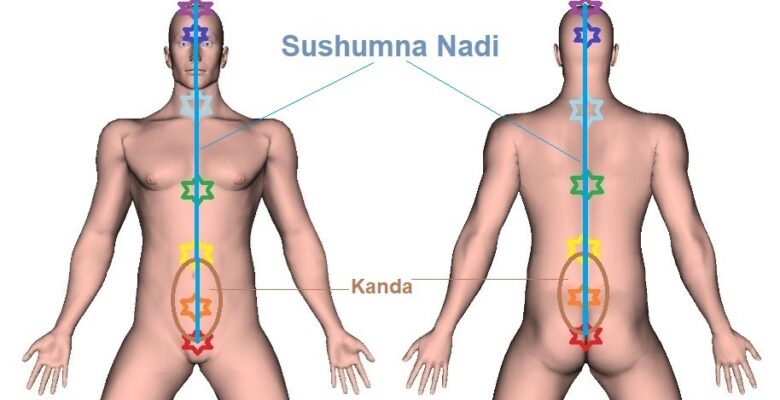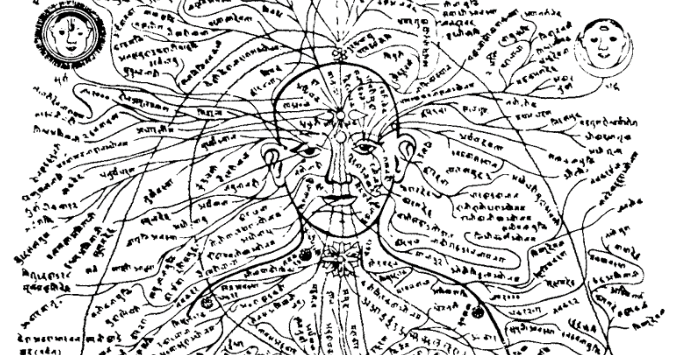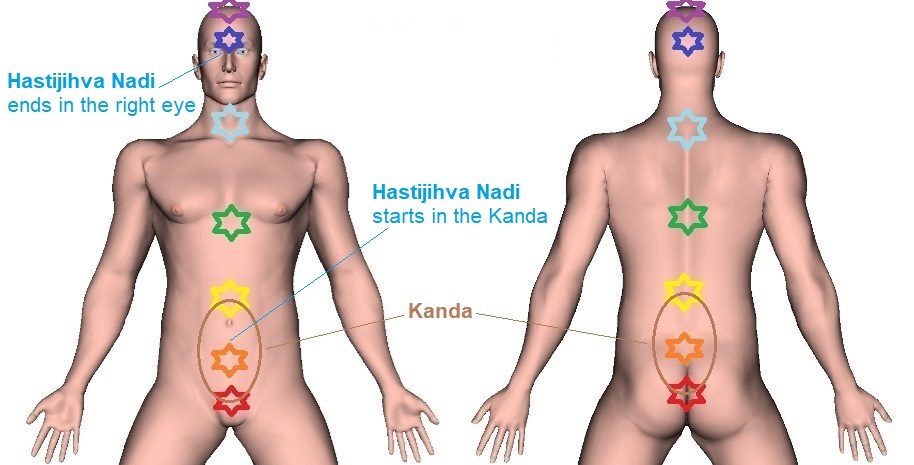
Hastijihva Nadi is known as one of the fourteen fundamental Nadis, the fourteen main Prana Energy Channels in Yoga. It’s name is also written as Hasti-Jihva, Hastijihvika, Hastajihva, Hasti Jeeva, Ibhajihva, Karijihvika, or Hasta Jihwa Nadi. Hastijihva is an Sanskrit word and literally means “elephant’s tongue.”
Studying the classical Yoga sources in which Hastijihva is mentioned, the general consensus seems to be that Hastijihva Nadi ends its trajectory in the right eye, while also passing through (or stretching to) the left foot (and/or left big toe or toes). Its starting point is in the Kanda navel area (Kandasthana).

Nevertheless, depending on the Sanskrit versions (and translations) of the Darshana Upanishad it’s written that there’s a passage through either the left or alternatively the right foot.
An interesting fact here is that some in the Thai Massage community have equaled Hastijihva Nadi with the Thai Energy Line Sen Thawari, which has a termination point in the right eye and a passage over the right leg and foot.
Sometimes, notably in more contemporary descriptions of the last decades, it’s even added that Hastijihva Nadi branches out to the arm, hand, and fingers, either to the left or right side of the body. This may also find its equivalent in Sen Thawari, or alternatively in the Thai Sen Line Kalathari, the latter case notably when Hastijihva Nadi and Gandhari Nadi would be taken together as one integrated Nadi.
In any case, from ancient Yogic scriptures it can be deducted that Hastijihva Nadi is a complementary Nadi of Gandhari Nadi; they’re often mentioned together as a pair. Nonetheless, it’s not unambiguously clear if it either supports Gandhari Nadi or if it’s opposed to Gandhari.
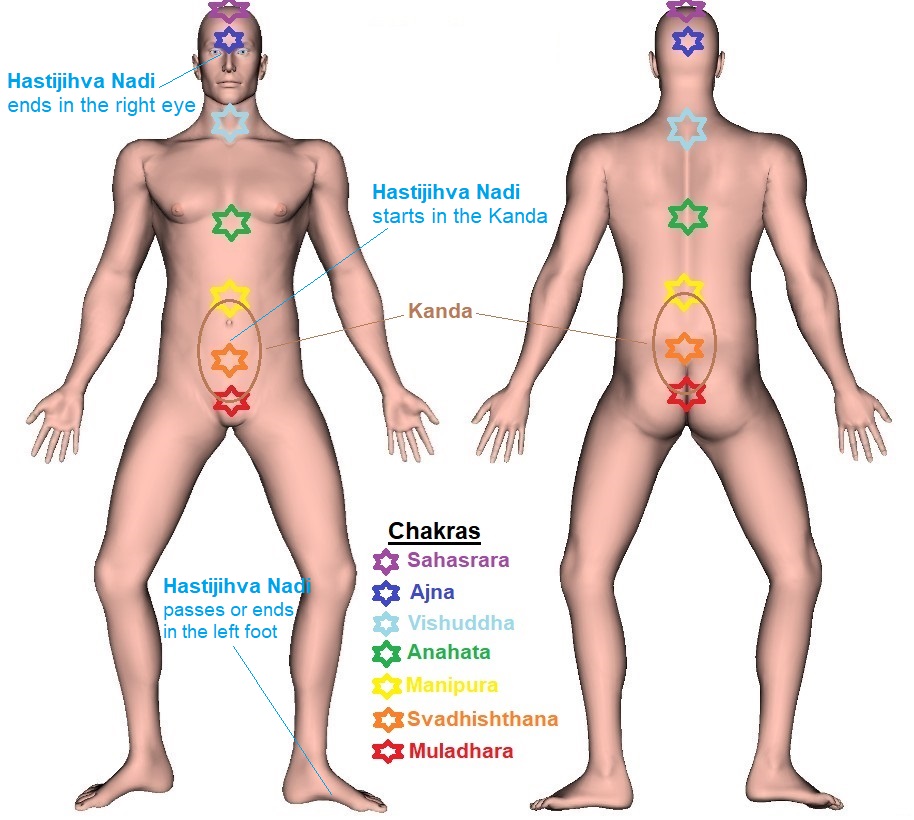
It would be speculation to affirm the exact trajectory of Hastijihva. Yet, provisionally we could think of the following options:
- a direct pathway at the front of the body, running from the Kanda into two directions: straight up to the right eye and straight down via the inside of the left leg to the left foot and toes;
- a trajectory starting in the Kanda, descending along the inside of the right leg down to the right foot and toes, subsequently ascending at the outside of the right leg up to the hip, across the right side of the back or chest up to the head, while going over the right side of the face or head to the right eye (roughly such as with the Thai Energy Line Sen Thawari);
- a pathway running from the Kanda into two directions: straight up to the right eye and subsequently over the inside of left leg down to the left foot and toes, subsequently ascending the outside of the left leg up to the hip, across the back of the body to the left shoulder and finally down the outside of the left arm to the left fingers (see the tentative chart for Hastijihva Nadi further below).
Pathway and Chart of Hastijihva Nadi
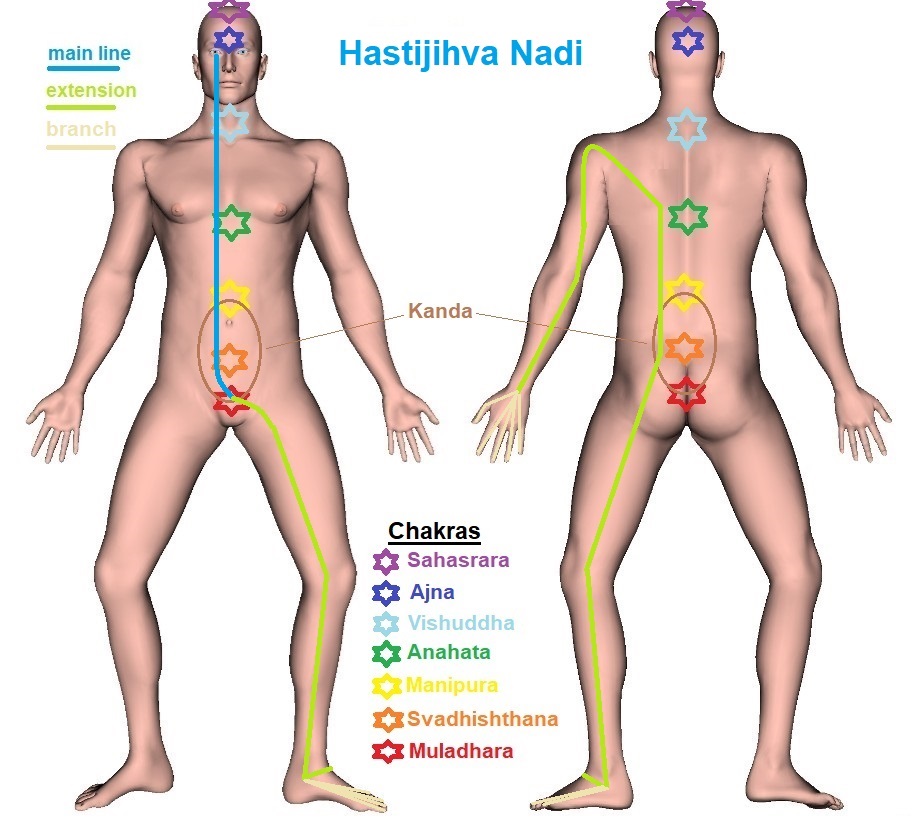
Below then several different trajectories (i.e. locations or pathways) as found in some classic Yoga scriptures and sources:
- Hasti-jihva stands at the front of Ida (Darshana Upanishad);
- Hasti-jihva goes to the big toe of the right foot (Darshana Upanishad — depending on the version);
- Hasti-jihva goes to the big toe of the left foot (Darshana Upanishad — depending on the version);
- Gandhari and Hastijihvika conduct through the eyes (Siddha Siddhanta Paddhati);
- Gandhari and Hastijihva originate therefrom [Kanda] and proceed to the two eyes (Yoga Shikha Upanishad);
- Hasti-Jihva stands in the right eye (Yoga Chudamani Upanishad);
- Gandhari and Hasti-Jihva are the Nadis that stand at the front and rear side of Susumna and terminate at the left and right eyes (Tri Sikhi Brahmana Upanishad);
- Hasti-jihva is on the right eye (Goraksha Samhita);
- Gandharika and Ibhajihva [Hastijihva] originating from Nabhicakra [Kanda], extend up to the end of the eyes (Hatha Tattva Kaumudi);
- Hastijihva goes from the left big toe, up to the left eye (Hatha Tattva Kaumudi);
- Hastijihva is at the side of Ida and extends up to the tip of the big toe of the left foot (Yoga Yajnavalkya);
- Hastijihva is said to be situated up to the left toe (Vasistha Samhita );
- Gandhari is situated in the left and Hastajihva in the right eye (Shiva Swarodaya);
- Hail to the right side, Hastijihva, the Sakti deluding all (Bhavana Upanishad).
Hastijihva – Indications and Functions
It’s thought that Hastijihva Nadi provides energy to the right eye and to the left limbs (although some sources consider that it feeds the right limbs).
Like Gandhari Nadi, it’s often asserted to have many similar functions as Ida Nadi and supporting the latter’s function.






